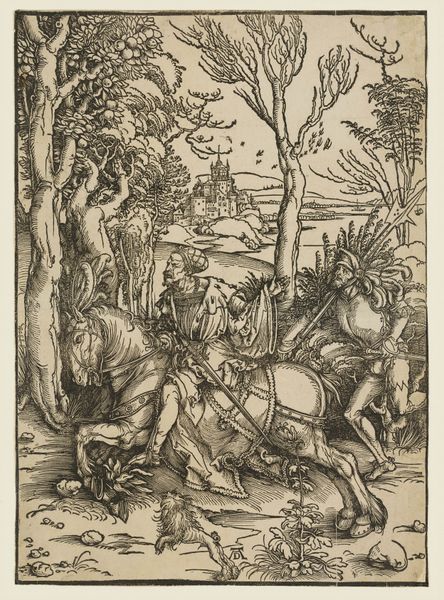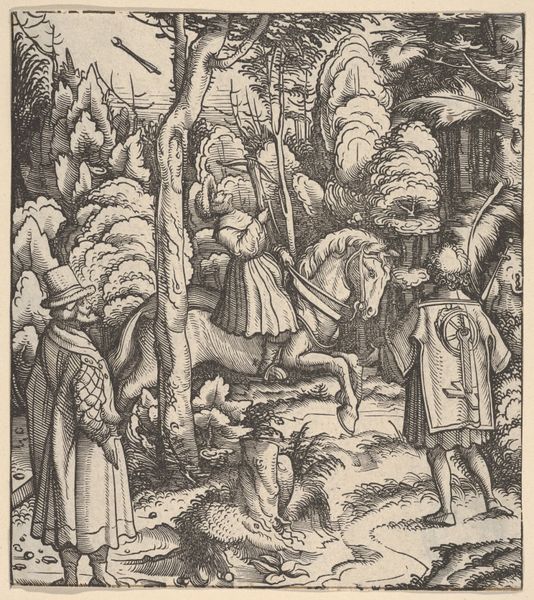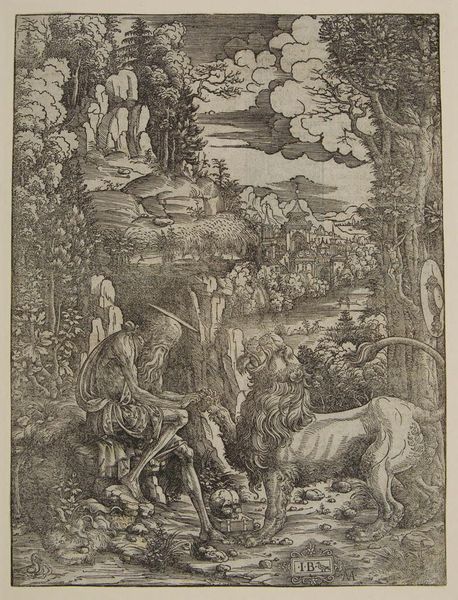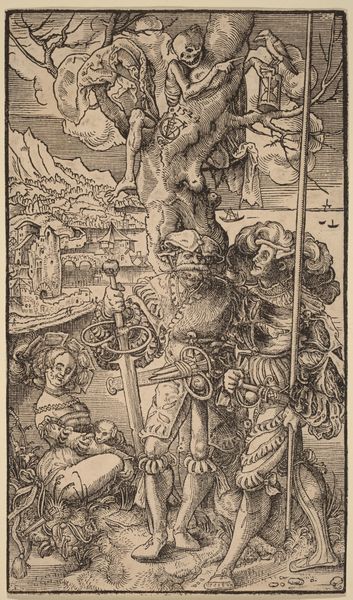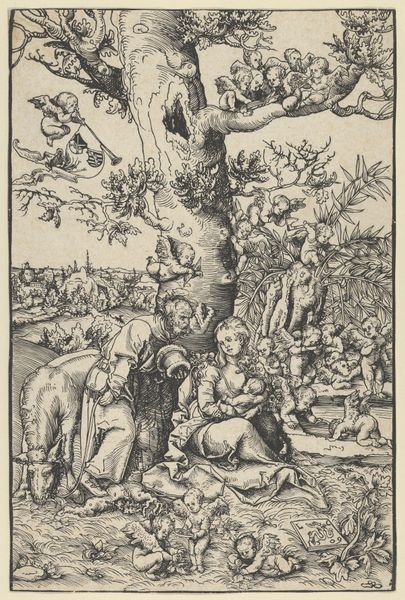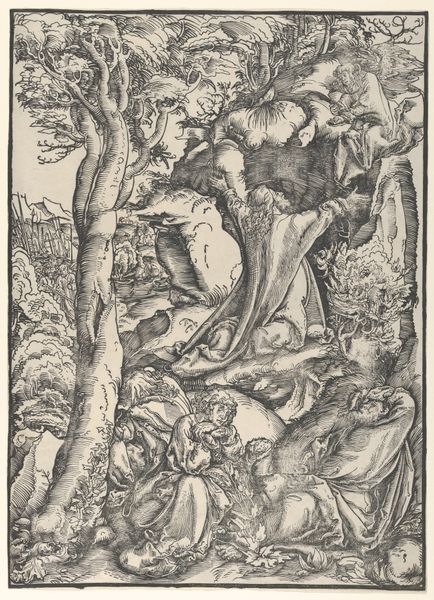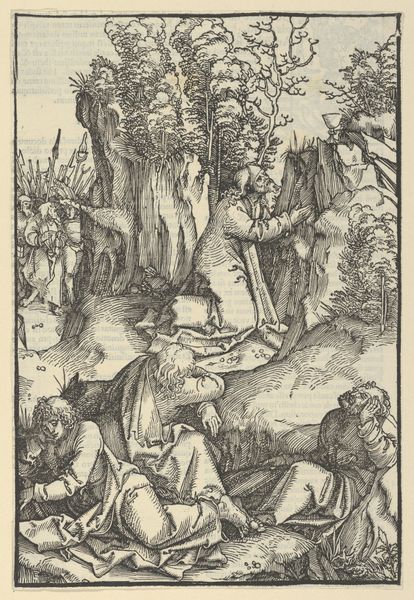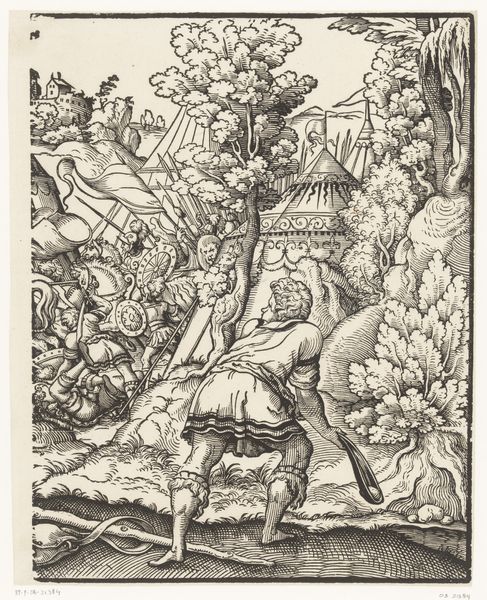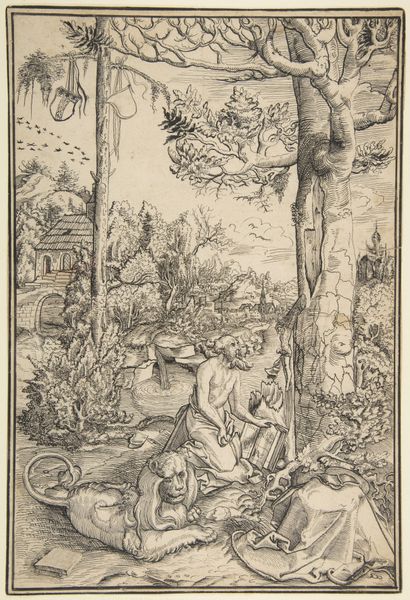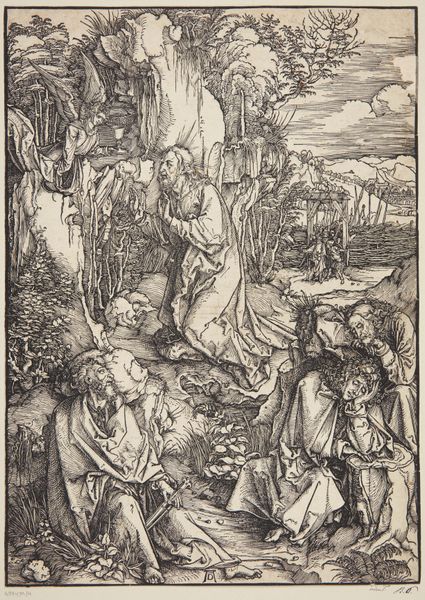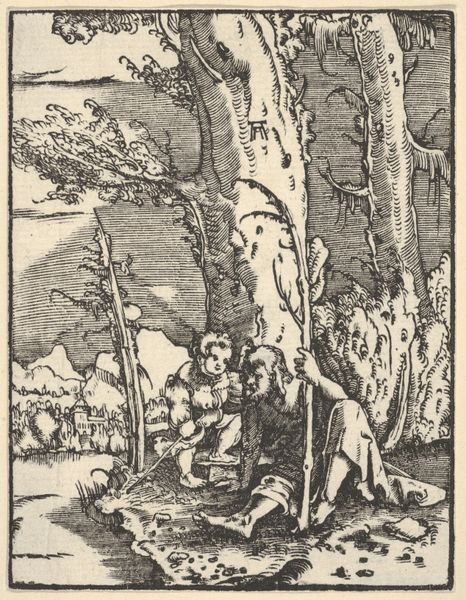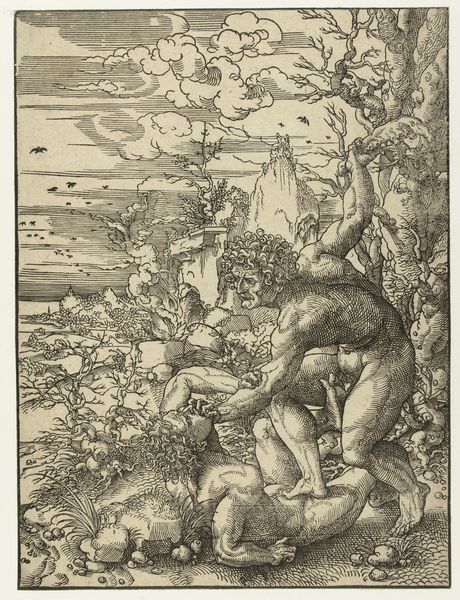
print, woodcut
# print
#
landscape
#
figuration
#
woodcut
#
line
#
history-painting
#
northern-renaissance
Dimensions: 11 5/8 x 8 5/8 in. (29.53 x 21.91 cm) (image)
Copyright: Public Domain
This woodcut of Saint Jerome and the Lion was made by an anonymous artist in the fifteenth or sixteenth century. In this detailed print, we see the learned saint extracting a thorn from the paw of a lion. The story of Saint Jerome was often used in the early modern period to demonstrate the power of knowledge over the natural world. Jerome lived as a hermit and translated the bible, connecting him to the important themes of piety and learning. Prints like this were part of an expanding visual culture, and we might consider how the format of printmaking helped to democratize the image of the scholar. The intended audience for the print, and the context in which it was meant to be viewed, might offer insight into the print’s meaning. By studying this artwork and its historical context, we can gain a deeper understanding of the cultural values and beliefs of the society that produced it. Historians use primary sources and other research resources to understand artworks within their social and institutional contexts.
Comments
minneapolisinstituteofart about 2 years ago
⋮
Woodcuts had a far richer tradition among Germans than among Italians, making Master I.B. with the Bird-note the tiny bird next to his monogram-a rarity. Of his eleven woodcuts, Saint Jerome and the Lion is the finest. The image of the ascetic saint removing a thorn from a lion's paw, which represents compassion subduing brute strength, was a bit outdated when the master created his intricate woodcut. More in vogue was Albrecht Dürer's scholarly portrayal of the saint, also included in this exhibition. Both prints include Saint Jerome's traditional iconography of skull, signifying life's transience; book, showing his scholarly nature; and cardinal's hat and crucifix, showing his devotion.
Join the conversation
Join millions of artists and users on Artera today and experience the ultimate creative platform.

